Archive for 2019
New York’s COJ Restrictions Have Been Signed Into Law
August 30, 2019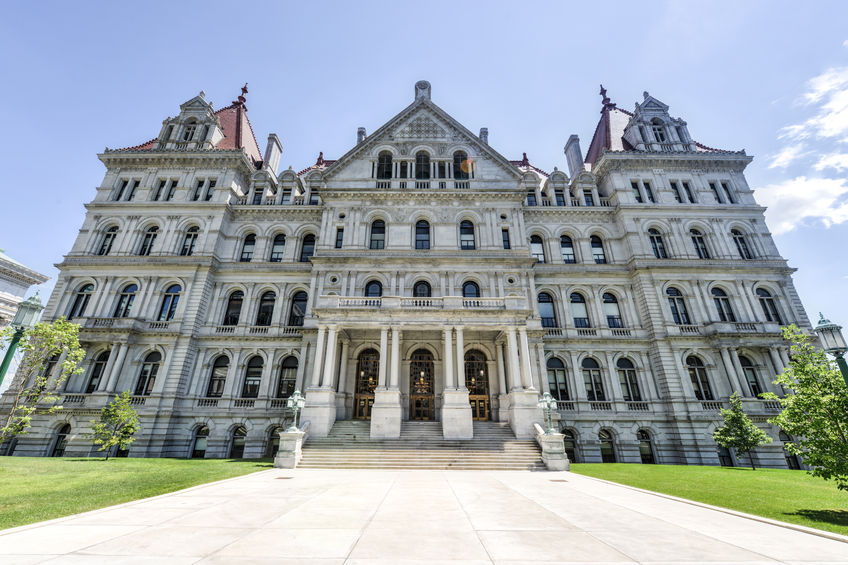 Governor Cuomo has signed S6395, the law that outlaws entering a Confession of Judgment in New York against a non-New York debtor.
Governor Cuomo has signed S6395, the law that outlaws entering a Confession of Judgment in New York against a non-New York debtor.
Rich Azzopardi, a senior advisor to the governor, said on social media that the law has “closed a loophole that allowed unscrupulous creditors to use NY courts to penalize out-of-state consumers with no ties to the state.” He congratulated Senators Brad Hoylman and Assembly Member Jeffrey Dinowitz for their work on the bill.
Senator Hoylman tweeted in response that “the entire business model of lenders who exploited New York’s court system and laws to prey on out-of-state small businesses through confessions of judgment was immoral.”
The Confession of Judgment ban is very specific, it prohibits the entering of a COJ in New York against a non-New York party. It does not prevent parties from filing lawsuits in New York. It does not prohibit COJs from being filed in other states. This law is significant because approximately 99% of COJs being utilized in the small business finance industry were being filed in New York regardless of where the debtor resided. That is because the New York Court system is the fastest and most efficient when it comes to entering COJs and securing a judgment.
The bill was drafted in response to a controversial story series published by Bloomberg reporters Zeke Faux and Zachary Mider that alleged abuses were taking place in the New York courts via COJs.
New York’s COJ Bill Has Been Delivered To The Governor
August 28, 2019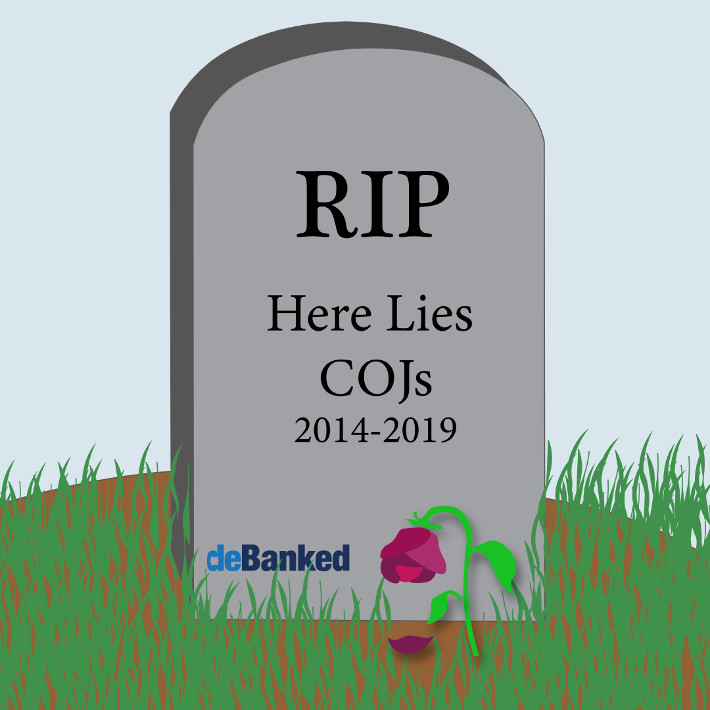 New York’s infamous Confession of Judgment bill has finally been delivered to the governor for his signature. Although the legislative process offers flexibility to depart from the statutory timelines (as we have witnessed), the governor now presumably has 10 days or less to sign it. Stay tuned.
New York’s infamous Confession of Judgment bill has finally been delivered to the governor for his signature. Although the legislative process offers flexibility to depart from the statutory timelines (as we have witnessed), the governor now presumably has 10 days or less to sign it. Stay tuned.
The Confession of Judgment ban is very specific, it prohibits the entering of a COJ in New York against a non-New York resident. It does not prevent parties from filing lawsuits in New York. It does not prohibit COJs from being filed in other states. This law is significant because approximately 99% of COJs being utilized in the small business finance industry were being filed in New York regardless of where the debtor resided. That is because the New York Court system is the fastest and most efficient when it comes to entering COJs and securing a judgment.
Outside the Box: Idea Financial’s Unusual Path to Alternative Finance
August 28, 2019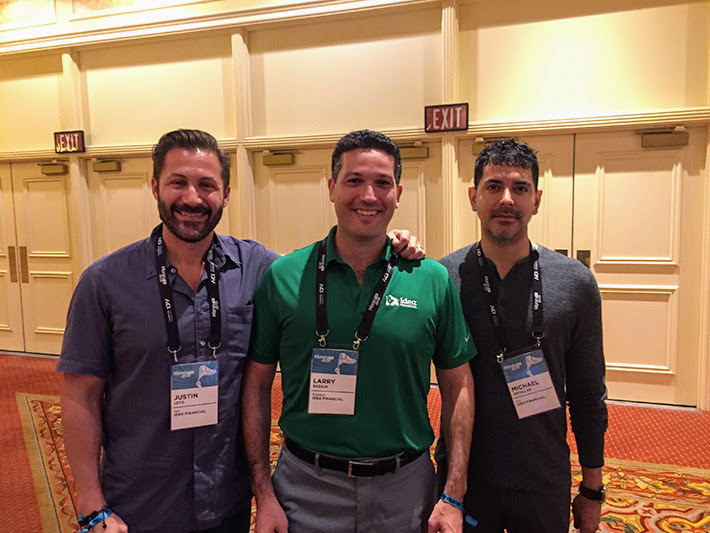
How many lawyers does it take to start up an alternative finance company? Two, according to Idea Financial’s Co-founders, Justin Leto and Larry Bassuk.
Idea, a Miami-based company which offers lines of credit to SMB owners, is the product of Leto and Bassuk’s partnership over the course of years, the latter told deBanked. “We took a leap of faith and left our practices and we began developing this business out of the conference room of our own firm.” But before that, the pair worked together as both lawyers and entrepreneurs.
Beginning in 2011, they met when Leto was already running his own practice and Bassuk was working as an associate for a different firm on the same floor. What started as a chance meeting developed into talks of what’s missing from their industry, which ultimately led to their early ventures together: their own legal firm, Leto | Bassuk, and Level Insurance.
While the former of these is no longer operating, due to their focus shifting to Idea, Level is still providing services to those looking for a niche form of insurance. Established in 2016, the company offers Litigation Cost Protection which covers those lawyers who work on contingency, this being the agreement of them being paid a percentage of the assets they recover for the client, thus earning nothing if the client loses.
Born from Leto and Bassuk’s own experiences as attorneys, Level Insurance provided that initial entrepreneurial step outside of a law firm. And while it afforded the comfort of overlapping with the legal industry, their decision to go into alternative finance brought with it a new marketplace as well as new challenges.
Although it was founded in March 2017, Idea Financial’s first year in business was largely spent working out of Leto | Bassuk’s conference room, figuring out strategies, technology, and credit models; as well as making key hires and developing their product. In fact, it wasn’t until January of 2018 that Idea made their first loan. Initially backed with $20 million by Warsaw-based Idea Bank, which specializes in servicing small businesses, Idea Financial has since secured another $70 million from the fintech bank, Cross River Bank, and has funded $50 million to nearly six hundred businesses.
Now at 35 employees and with a new office beyond the walls of the old conference room, Leto asserts business is going well despite the odds having been stacked against them. “Some would have called [Idea Bank] crazy because they gave two people who were from outside the space this kind of money to build a business and lend money without any strict covenants. So, Larry and I were left to make our own rules.”
And looking forward, Bassuk is confident of their future, lauding much of the company’s strength to the diversity of their workforce, with recruits from Montenegro, Russia, Colombia, and Venezuela, and their unique backgrounds. “We’re all about recruiting top talent, all about diversity of thought.”
“We’re not from the finance space, we’re not from the alternative lending space either, we came at this opportunity with a different approach.”
Born To Borrow
August 26, 2019 Consumer debt has surpassed $4 trillion for the first time, and it’s continuing its ascent into the stratosphere. It’s getting big enough to trigger the next recession, and financial education isn’t changing the underlying consumer behavior.
Consumer debt has surpassed $4 trillion for the first time, and it’s continuing its ascent into the stratosphere. It’s getting big enough to trigger the next recession, and financial education isn’t changing the underlying consumer behavior.
Personal loan balances shot up $21 billion last year to close 2018 at a record high of $138 billion, according to a TransUnion Industry Insights Report. The average unsecured personal loan debt per borrower was $8,402 as of the end of last year, TransUnion says.
Much of the increase in consumer debt has emerged with the rise of fintechs— such as Personal Capital, Lending Club, Kabbage and Wealthfront—notes Rutger van Faassen, vice president of consumer lending at a U.S. office of London-based Informa Financial Intelligence, a company that advises financial institutions and operates offices in 43 countries.
In fact, Fintech loans now comprise 38% of all unsecured personal loan balances, a larger market share than any of the more traditional institutions, the TransUnion report notes. Banks’ market share has decreased from 40% in 2013 to 28% today, while credit unions’ share has declined from 31% to 21% during the same time period, TransUnion says.
 Fintechs are also gaining at the expense of the home- equity market, van Faassen maintains. “They’re eating away at some of the balance that maybe historically was in home-equity loans,” he says. While total debt is increasing, the amount that’s in home equity loans is actually shrinking, he notes.
Fintechs are also gaining at the expense of the home- equity market, van Faassen maintains. “They’re eating away at some of the balance that maybe historically was in home-equity loans,” he says. While total debt is increasing, the amount that’s in home equity loans is actually shrinking, he notes.
What’s more, fintechs are changing the way Americans think about credit, van Faassen continues. Until recently, consumers experienced a two step process. First, they identified a need or desire, like a washer and dryer or home renovation. Realizing they didn’t have the cash to fund those dreams, they took the second step by approaching a financial institution for a loan.
If consumers chose a home equity line of credit to procure the cash, they had to wait for something like 40 days from the beginning of the application process to the time they got the money, van Faassen says. “You really had to be sure you wanted something,” or the process wasn’t worth the effort, he says.
Fintechs have removed a lot of the “pain” from that process, van Faassen says. With algorithms helping to assess the risk that an applicant can’t or won’t repay a debt and digitization easing access to financial records, fintechs can quickly evaluate and make a decision on an application. Tech also helps assess applicants with thin or nonexistent credit files, which broadens the clientele while also contributing to total consumer debt.
Meanwhile, mimicking an age old process in the car business, merchants are beginning to make credit available at the point of sale. Walmart, for example, recently signed a deal with Affirm, a Silicon Valley lender, to provide point-of-sale loans of three, six or 12 months to finance purchases ranging from $150 to $2,000. Shoppers apply for the loans by providing basic information on their mobile phones and don’t have to talk to anyone in person about their finances. Affirm’s CEO Max Levchin has called the underwriting process ‘basically instant.”
If that convenience comes at too high a cost, it doesn’t matter much because borrowers can later find another finance vehicle with better terms, van Faassen says. “So if I get the money at the point of sale, which might have been zero for six months and then it steps up to 20-plus percent, there is no problem with refinancing that debt,” he says.
But there’s a downside to the ease of borrowing, van Faassen cautions. It could trigger the next recession, even though unemployment remains low. Despite modest recent gains, wages have remained nearly stagnant for years. That means an increase in interest rates could lessen consumers’ ability to pay off their debts, he says.
 Meanwhile, at least some large mortgage lenders have begun running into problems, a situation that bears an eerie resemblance to the beginning of the Great Recession that struck near the end of 2007, notes a report in luckbox magazine, a publication for investors. Stearns Holding, the parent of Sterns Lending, the nation’s 20th largest mortgage lender, filed for bankruptcy protection just after the July 4 holiday, the luckbox article says.
Meanwhile, at least some large mortgage lenders have begun running into problems, a situation that bears an eerie resemblance to the beginning of the Great Recession that struck near the end of 2007, notes a report in luckbox magazine, a publication for investors. Stearns Holding, the parent of Sterns Lending, the nation’s 20th largest mortgage lender, filed for bankruptcy protection just after the July 4 holiday, the luckbox article says.
Another worrisome sign with regard to the possibility of recession is emerging as institutional investors buy into the peer to peer lending market. Institutional investors bought batches of sliced and diced home mortgage securities that helped bring about the Great Depression.
Then there’s the nagging notion that the country and the world are becoming ripe for recession simply because no downturns have occurred for a while. Talk to that effect was circulating at the recent LendIt Conference, van Faassen observes. Fintech executives often come from the banking world and thus still find themselves haunted by the specter of the Great Recession. That’s why they’re already beginning to tighten underwriting for consumer credit van Faassen says.
One difference this time around lies in the fact that nothing about the increase in consumer debt appears to be hidden from public view, van Faassen says. Before, investors fell victim to the mistaken impression that risky mortgage-backed securities were rated AAA when they weren’t.
Plus, the increase in peer-to-peer lending could keep the economy going even if big financial institutions freeze the way they did during the Great Recession, van Faassen notes. “Hopefully, with the new structures that are out there, we can keep liquidity going,” he says. That raises key questions for the alternative small- business funding community. The industry came into being partly as a response to banks’ tightened lending policies during the Great Recession, so perhaps a downturn isn’t such a bad thing for the sector. But a downturn for the economy in general could cripple merchants’ ability to pay off debt.
But all bets are off during hard times. In the last recession the conventional wisdom that consumers make their mortgage payment before paying other bills was turned on its head. Instead of making the house payment—because foreclosure would take several months—people were choosing to make their car payments so they could get to work. Nobody really knows ahead of time what will happen in a recession, van Faassen notes.
After all, economics relies to at least some degree upon the often-irrational financial decisions of the general public. And science demonstrates that it’s no easy task to convince consumers to handle their cash, credit and debt responsibly, says Mariel Beasley, principal at the Center for Advanced Hindsight at Duke University and Co-Director of the Common Cents Lab (CCL), which works to improve the financial behavior of low- to moderate-income households.
“For the last 30 years in the U.S. there has been a huge emphasis on increasing financial education, financial literacy,” says Beasley. But it hasn’t really worked. “Content-based financial education classes only accounted for .1 percent variation in financial behavior,” she continues. “We like to joke that it’s not zero but it’s very, very close.” And that’s the average. Online and classroom financial education influenced lower-income people even less.
 Lots of other factors influence financial behavior, Beasley notes. How much a person saves, for example, depends upon how much they make, what their bank tells them and what practices they encountered at home as children, she says. The CCL has been finding out some other things, too.
Lots of other factors influence financial behavior, Beasley notes. How much a person saves, for example, depends upon how much they make, what their bank tells them and what practices they encountered at home as children, she says. The CCL has been finding out some other things, too.
In one example of its findings, it discovered that putting an amount for a minimum payment on a credit card decreases how much consumers pay. That happens because listing a minimum payment amount creates an anchor, and borrowers adjust their payment upward from there, Beasley says. If the card carrier doesn’t specify a minimum, consumers tend to adjust downward from the full amount they owe. “It turns out to be incredibly powerful,” she contends.
It’s the kind of problem that shows financial institutions haven’t devised many systems to reduce consumer debt by speeding up repayment, Beasley maintains. In this example, suggesting higher payments would prompt some consumers to pay off their debt more quickly.
In an exception to standard practice, a credit card company called Petal does exactly that by placing a slider on its website to help borrowers determine the amount of their payment, she notes.
Meanwhile, people tend to base financial decisions on the examples they see other people set, Beasley says. Problems arise with that tendency because they may see one neighbor spending money freely to dine in restaurants but don’t see any of the many neighbors eating at home to save money. They see a neighbor driving a new car but don’t know how much that neighbor is setting aside for retirement.
That’s why most people overestimate how much others spend to dine out in restaurants, Beasley says. When shown the error, most reduce their own spending in restaurants, she notes, but within two weeks their behavior returns to its original level, their newfound knowledge “drowned out by the noise in the world,” she says.
That’s not good for consumers or small businesses, but help is on the way, according to John Thompson, chief program officer of the Financial Health Network, a national nonprofit research and consulting firm that works with financial institutions and other companies to improve consumer financial health.
As part of that mission, the Network has formulated procedures to assess the financial health of individuals and small businesses, Thompson says. It’s too early to say whether the tool will help with loan underwriting, he notes, but financial wellness determines the ability to pay back debt, he notes.
The Network also publishes the U.S. Financial Health Pulse, which recently pronounced just 28% of Americans financially healthy, meaning that they have sufficient income, savings and planning to handle an unexpected expense and act on the decisions they make. About 55% are relegated to various stages of coping, and 17% find themselves in a vulnerable state.
So Americans aren’t feeling financially secure, and they’ve borrowed $4 trillion to reach that unenviable state. They’re borrowing more and learning virtually nothing useful about their financial errors. Thompson has a way of summing up the situation. “It’s crazy,” he says.
IOU Financial Originates $38.5M in Q2
August 26, 2019IOU Financial originated $38.5M in loans in Q2, up from $32.8M the quarter before. The company said that the figure was actually a 31.8% increase over Q2 2018.
In a press release, IOU CEO Phil Marleau said, “IOU delivered strong loan origination and revenue growth in the second quarter of 2019 and continued to post positive earnings. We remain committed to our strategy of profitable growth which continues to deliver consistent and favorable results since its implementation.”
IOU is traded on the Toronto Stock Exchange and has a market cap of $19.3M.
Apple Card Partnership Sees Goldman Sachs Lending to Subprime Borrowers
August 25, 2019 Apple Card launched this month, and with it have come some complaints over the unforeseen damage that wallets can do as well as an official guide from Apple on how to tend to and clean your new credit card. But aside from aesthetic and hygienic concerns, the card’s release to the wider public has raised eyebrows with news of subprime borrowers being approved.
Apple Card launched this month, and with it have come some complaints over the unforeseen damage that wallets can do as well as an official guide from Apple on how to tend to and clean your new credit card. But aside from aesthetic and hygienic concerns, the card’s release to the wider public has raised eyebrows with news of subprime borrowers being approved.
Forged from a partnership between Apple and Goldman Sachs, a bank known for dealing with corporations and the rich, the move seems out of character for the 150-year-old institution.
Rolled out initially to Apple employees as a test, rumors began to circulate of early adopters expressing surprise at being approved despite having FICO scores in the middling 600s. Then, upon Apple Card’s wider release, Ed Oswald came forward and spoke to CNBC about receiving his card, along with a credit limit of $750 and an interest rate of 23.99%, despite having a credit score of around 620.
But this is not the bank’s first foray into FICO’s less than 700. Since its launch, Goldman’s Marcus has issued $4.75 billion in personal loans, 13% of these going to borrowers with a FICO of 660 and under.
This 13% and the partnership with Apple are indicative of David Solomon’s tenure as CEO of Goldman Sachs, who has sought to expand into consumer finance following years of declining trade revenues.
And while this contrasts the bank’s history, the push for more access to credit is aligned with Apple’s values. In fact, in the 1990s, when the tech company was in talks with Capital One over a potential card partnership, Steve Jobs “had an aversion” to rejecting any customers who wanted to sign up. Such yearning for openness and ease of access has reportedly scared off other banks. According to CNBC, Citigroup was in advanced talks with Apple prior to Goldman Sachs’s confirmation, but pulled out of the deal due to concerns over the profitability of the partnership. Similarly, JPMorgan Chase, Barclays, and Synchrony all allegedly bid on the deal.
But what does such access mean? Well opening up credit to those with a less-than-proven track record increases the risk of losses due to unpaid loans. The speed with which funds are made available, the application and approval process takes two minutes, means that Apple Card could rival payday loans and alternative finance for those customers looking for more modest funding. And as well, the commodification and attention paid to the appearance of the card by Apple has led to it being viewed as the latest gadget from the company rather than a tool to use when financially necessary, as pointed out by Macworld, raising questions over how credit cards should be marketed.
On the topic of access, Ian Kar, the author of the Fintech Today newsletter said that “Apple is only making one card, so they have to target everyone … It’s not like they’re Chase with multiple cards like Sapphire Reserve to target a higher demographic and other cards for lower segments.”
This singular approach to credit joins Apple’s growing collection of services. Likely being pushed to account for the falling sales of the iPhone, Apple Card is the latest in a line of launches that includes Apple News+, Apple TV+, Apple Pay, and Apple Arcade.
This year, iPhone sales saw a drop of 12%, making up 48% of total Apple sales. While Apple services rose by 13% from 2018 to become the second largest segment of the company’s sales portfolio, being 21%.
When discussing Apple Card and its role in the bank’s ecosystem in an internal Goldman Sachs memo, Solomon, hinting at further partnerships, said “Apple Card is big, but it’s also a beginning.”
Jamie Dimon Among 181 CEOs Pledging to Look Beyond Investors
August 22, 2019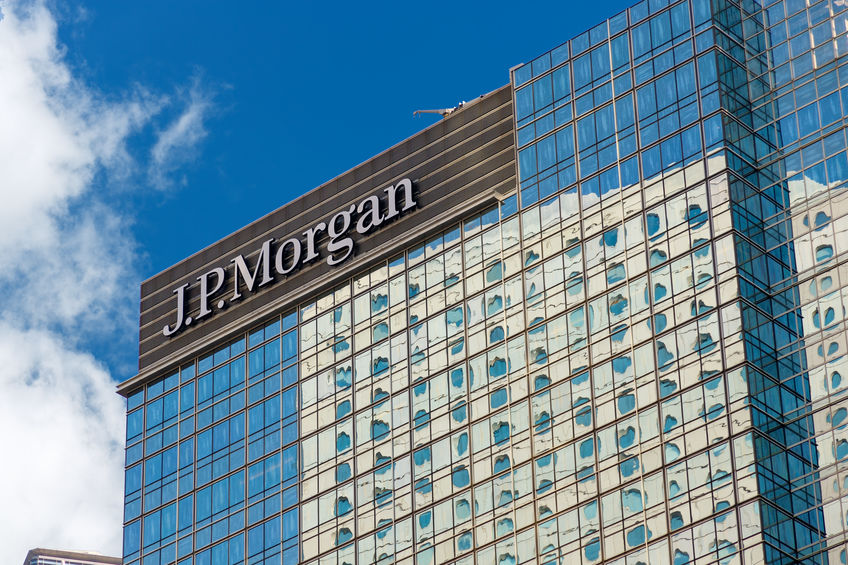 This week, JPMorgan Chase CEO Jamie Dimon along with 180 other CEOs published a statement committing themselves to rethinking corporate priorities and their responsibilities as leaders of business.
This week, JPMorgan Chase CEO Jamie Dimon along with 180 other CEOs published a statement committing themselves to rethinking corporate priorities and their responsibilities as leaders of business.
The majority of the Business Roundtable (BRT), a corporate lobbying group comprised of 200 CEOs that once was described as Obama’s “closest ally in the business community,” signed off on the statement, which outlines a number of vague commitments. Included are goals to deliver “value to our customers” by furthering “the tradition of American companies leading the way in meeting or exceeding customer expectations”; to deal “fairly and ethically with our suppliers”; to support “the communities in which we work” through “embracing sustainable practices across our businesses”; to compensate “[employees] fairly and [provide] important benefits”; and to generate “long-term value for shareholders, who provide the capital that allows companies to invest, grow and innovate.”
Such promises are in opposition to shareholder primacy, the belief that the purpose of a business is to create profit for stakeholders and the leading corporate philosophy in American capitalism, and are in in direct contradiction to the BRT’s 1997 statement which praised the shareholder-centric approach.
“We looked at this thing that was written in 1997 and we didn’t agree with it,” said Dimon following the statement’s release. “It didn’t fairly describe what we think our jobs are.”
Such a view is reminiscent of Dimon’s 2019 letter to JPMorgan Chase shareholders, which opened with “The American Dream is alive – but fraying for many,” and closed with “CEOs: Your country needs you!” Just as it is linked to fellow BRT member Larry Fink’s similar letter which discusses the growing trend of CEOs having political and social responsibilities. And topping these associations off is Amazon’s Jeff Bezos, another signatory of the statement, who in 2018 took an unexpectedly patriotic turn when he criticized other firms, such as Google, that pulled out of military contracts, saying, “If big tech companies are going to turn their back on the US Department of Defense, this country is going to be in trouble.”
More and more CEOs are stepping up to explain the moral vision of their companies’. Harvard Business School Historian Nancy Koehn says that this specific case of such espousing is a “response to something in the zeitgeist. They perceive that business-as-usual is no longer acceptable.” The reasons for such a change in approach could be changing trends amongst younger workers, such as employees’ demand that their employer believe in something beyond profit, the increasing number of consumers who factor a business’s social purpose into their purchasing decisions, and the constant threat of social media backlash.
CEO of Johnson & Johnson Alex Gorsky, who drafted the language of the statement, echoed this concept of CEO’s having a social vision when he noted that “there were times when I felt like Thomas Jefferson.” Standing in for the Founding Fathers in Gorsky’s vision are Pepsi, Walmart, Apple, and General Motors.
Reactions to the statement have been skeptical, with many critics calling into question whether any action will come from such words. “The bottom line is, I don’t think much is going to change,” commented Dick Bove, a Wall Street analyst. While Walter Olson, a Senior Fellow at the Cato Institute, said that “It’s not really clear whether they’re intending to replace any part of the system or do the same things as before, but … smile more.”
Bernie Sanders was more pointed in his reaction to the statement. “I don’t believe what they’re saying for a moment. If they were sincere, they would talk about raising the minimum wage in this country to a living wage, the need for the rich and powerful to pay their fair share of taxes.” Fellow primary candidate Elizabeth Warren also weighed in, saying that it was “a welcome change,” but “without real action, it’s meaningless … These big corporations can start following through on their words by paying workers more instead of spending billions on buybacks.”
The Council of Institutional Investors (CII), a group that promotes the interests of investors and shareholders, responded with concern, saying that “The statement undercuts notions of managerial accountability to shareholders.” “Accountability to everyone means accountability to no one … It is government, not companies, that should shoulder the responsibility of defining and addressing societal objectives with limited or no connection to long-term shareholder value.”
Calls For Oversight As SBA Loans Go To Wall Street, Investor Funds, And High End Businesses In Beverly Hills
August 20, 2019 In a report released this month by OpenTheBooks.com, a non-partisan non-profit organization, outlined how and who the SBA had guaranteed loans for in the years between 2014 and 2018. Covering various forms of funding, ranging from 7(a)s to 504s to surety bond guarantees, the report details a number of different types of businesses as well as locations that the SBA guaranteed loans for across all 50 states.
In a report released this month by OpenTheBooks.com, a non-partisan non-profit organization, outlined how and who the SBA had guaranteed loans for in the years between 2014 and 2018. Covering various forms of funding, ranging from 7(a)s to 504s to surety bond guarantees, the report details a number of different types of businesses as well as locations that the SBA guaranteed loans for across all 50 states.
Running through the document is a criticism of the channels through which the loans are processed, as questions are raised over whether those receiving financing actually require the funds. Largely being businesses that provide luxury goods and services, the report puts forth five questions that “the public should be asking”: how were these industries and subsidies chosen? Why should non-upper-class citizens subsidize these businesses? Why is the SBA lending so much via +$1 million loans during a period of unprecedented economic prosperity? Why is the SBA lending to Wall Street bankers? And is the SBA qualified to make determinations of which business to favor over another when approving loans?
Such questions stem from the analysis that follows them in the report. Herein, it is revealed that the SBA obligated and awarded $168.9 billion in loans and insurance guarantees, and that small businesses in Beverly Hills, specifically, received $117 million of this; while $12.2 billion flowed to Wall Street’s venture capital firms, mezzanine finance firms, private investor funds, and investment pools; and $280 million went to private country clubs. SBA reports indicate that $1 of every $14 loaned goes to just 300 companies out of the total 543,081 recipients of SBA funding, with this group, dubbed ‘The Fortunate 300,’ receiving $12 billion. As well as these figures, the report reveals that the SBA charged off $16.5 billion from 2010 to 2018, and that there has been a 52% increase in lending between 2014 and 2018, with a 36% increase in loans of $1 million or more, specifically.
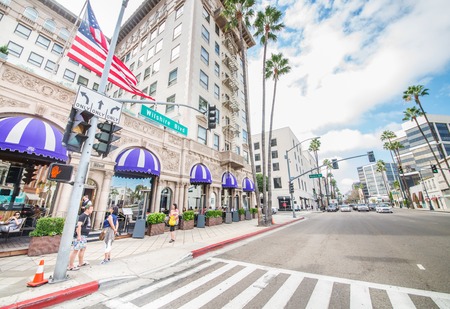 Of particular note are the sections devoted to 7(a) and 504 loans, these being the most common types of financing discussed in the document, with there being 303,363 recipients of the former and 29,210 of the latter. Outlined here are the top loan recipients of each type as well as the amounts received.
Of particular note are the sections devoted to 7(a) and 504 loans, these being the most common types of financing discussed in the document, with there being 303,363 recipients of the former and 29,210 of the latter. Outlined here are the top loan recipients of each type as well as the amounts received.
Displaying a wide-ranging portfolio, the top 50 7(a) loan recipients include a nationally recognized childcare program, a family owned producer and exporter of grain, and an aircraft spare parts distribution and repair service; with these receiving over $44 million, $25 million, and $19 million, respectively. Singled out in this section are plastic surgery clinics. With 115 individual clinics receiving $50.9 million between 2010 and 2018, the report draws attention to why such upper class and profitable businesses are requiring loans in the millions.
Similarly, the list of top recipients of 504 loans also feature a range of funding up to $45 million. What differed is that the top 50 504 recipients list is comprised of much more businesses in the hospitality sector, with Holiday Inn and Home2 Suites taking first and second place. However, the report again questions the allocation of funding to such businesses that are nationally successful, note that the purpose of 504s is to expand one’s company.
As well as these questions over loan allocations, the report serves to highlight another development within funding, this being the surge in disaster lending between 2014 and 2018 – a shift that perhaps reflects the increase in destructive weather that climate change has brought. According to the SBA, it has increased its approval of disaster assistance loans by 1,633%, with the number of loans jumping from 6,244 ($426 million) to 140,249 ($7.3 billion) in five years. Interestingly, the average loan value dropped from $68,326 to $52,726 in these years.





























